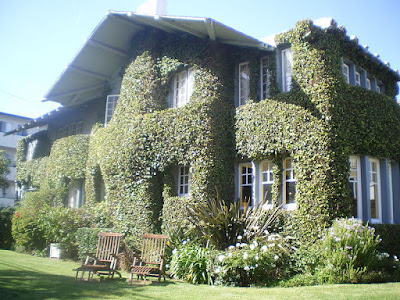Commonly known as the creeping or climbing fig, Ficus pumila is cultivated as an ornamental garden vine in subtropical regions or as a houseplant in temperate regions. Native to China, Japan, and Vietnam it is a woody evergreen with particularly small leaves. In fact the species name 'pumila' is a derivation of the Latin word for 'dwarf'. This refers to the juvenile growth which bears small, ovate or heart-shaped leaves of no more than 2.5 cm. As the plants develops into its mature growth larger leaves up to 10 cm are produced along with flowers and fruits.
 |
| How to grow Ficus pumila - Venice Beach House |
Under favorable conditions Ficus pumila is capable of reaching a height of between 2.5-4 metres. In its native environment it climbs the trunks of trees similar in habit to that of ivy. However, as you can see by the accompanying image, property will also provide a suitable support structure. Be aware that the adhesive aerial tendrils can cling or root in, and damage the structure and surface finishes on wooden supports.
Grow Ficus pumila outdoors in humus-rich, moist,but well-drained soil. It will perform best in full sun in a sheltered position, however it will also tolerate partial shade. Avoid exposed areas and planting outside in regions prone to frost.
Specimens grown as house or conservatory plants will perform well in a good quality loam-based compost such as John Innes 'No.2 or 3'. Provide full sun or filtered light, but provide some shade during the height of summer. Maintain a temperature range of between 13 - 24°C for continuous growth. Container grown specimens can be repotted every couple of years. Water regularly and apply a liquid soluble fertiliser once a month during the growing season. Reduce watering over the autumn and winter. Flowers are rarely produced on plants grown under protection.
For related articles click onto the following links:








No comments:
Post a Comment